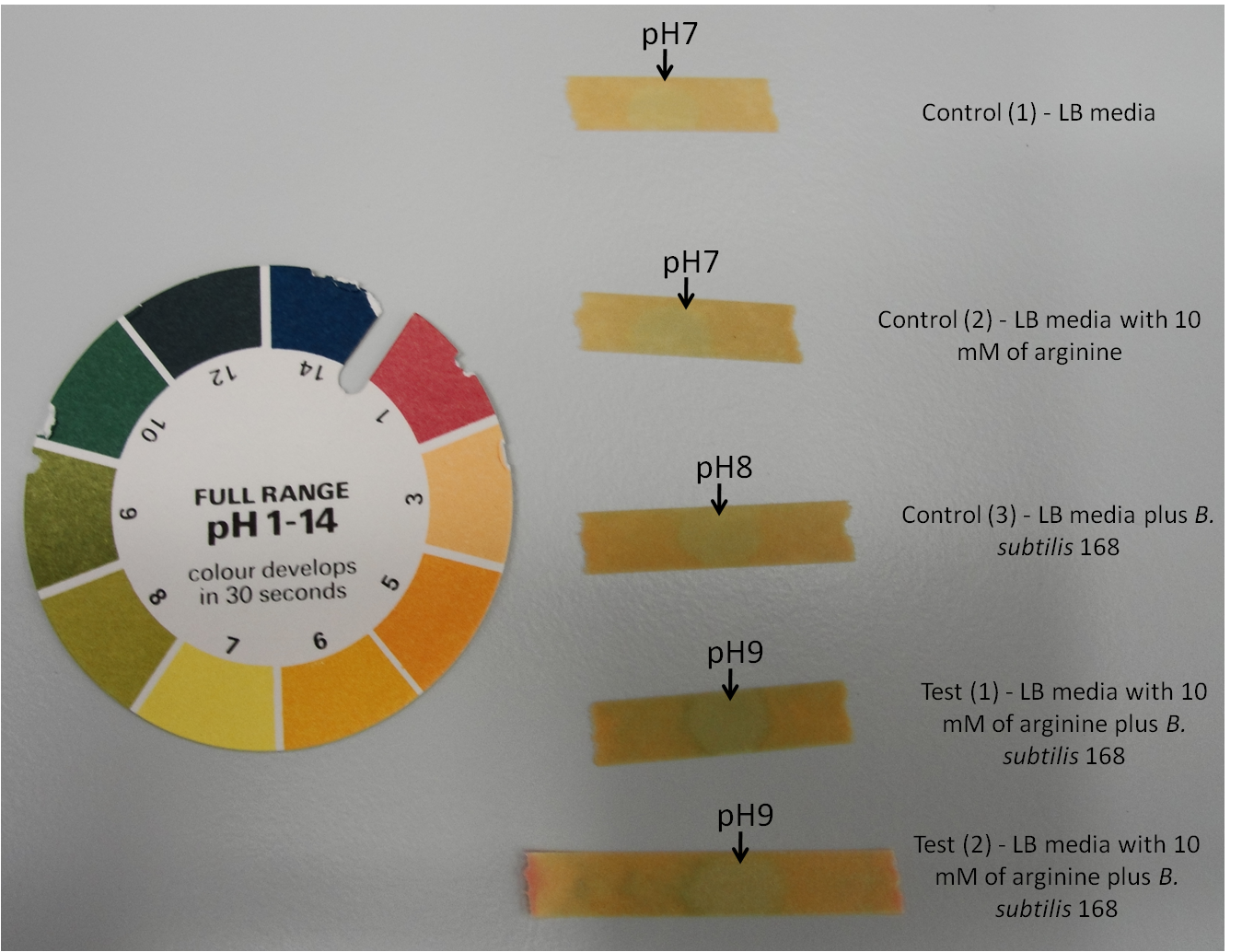Team:Newcastle/23 July 2010
From 2010.igem.org
Shethharsh08 (Talk | contribs) |
|||
| Line 1: | Line 1: | ||
{{Team:Newcastle/mainbanner}} | {{Team:Newcastle/mainbanner}} | ||
| - | |||
| - | |||
=Genomic DNA extraction experiment= | =Genomic DNA extraction experiment= | ||
Revision as of 21:48, 25 October 2010

| |||||||||||||
| |||||||||||||
Contents |
Genomic DNA extraction experiment
Aim
The aim of today's experiment is to extract genomic DNA from Bacillus subtilis strain 3610,genes from which will be needed for the swarming biobrick.
Procedure
- Please refer to DNA extraction of Bacillus subtilis
Discussion
At the end of the DNA rpecipitation step, we did not observe any small white pellet.
Conclusion
If the experiment has failed the experiment will be redone on Monday, 26th July, 2010.
Arginine experiment
Aim
The aim of this experiment is to determine whether B. subtilis 168 is able to take up external arginine.
Procedure
- Please refer to Arginine test
Results
Arginine is an amino acid that is acidic. Therefore if B. subtilis 168 is able to take up arginine, it will cause a pH change in the media. This would result in an increase in pH.
Figure 1: Arginine test using pH indicator stick to measure pH changes of the media.
| Time (in minutes) | Control (1) | Control (2) | Control (3) | Test (1) | Test (2) |
|---|---|---|---|---|---|
| 0 | pH 7 | pH 7 | pH 7 | pH 7 | pH 7 |
| 30 | pH 7 | pH 7 | pH 7 | pH 7 | pH 7 |
| 60 | pH 7 | pH 7 | pH 7 | pH 7 | pH 7 |
| 90 | pH 7 | pH 7 | pH 7 | pH 7 | pH 7 |
| 120 | pH 7 | pH 7 | pH 7 | pH 8 | pH 8 |
| 150 | pH 7 | pH 7 | pH 7 | pH 8 | pH 8 |
| 180 | pH 7 | pH 7 | pH 7 | pH 9 | pH 9 |
| 210 | pH 7 | pH 7 | pH 7 | pH 9 | pH 9 |
| 240 | pH 7 | pH 7 | pH 7 | pH 9 | pH 9 |
| 270 | pH 7 | pH 7 | pH 8 | pH 9 | pH 9 |
| 300 | pH 7 | pH 7 | pH 8 | pH 9 | pH 9 |
Table 1: Arginine test using pH indicator stick to measure pH changes of the media. Table represents the change in pH over the time span of 300 minutes i.e. 5 hours. Here,
- Control (1) - LB media
- Control (2) - LB media with 10 mM of arginine
- Control (3) - LB media plus B. subtilis 168
- Test (1) - LB media with 10 mM of arginine plus B. subtilis 168
- Test (2) - LB media with 10 mM of arginine plus B. subtilis 168
Conclusion
B. subtilis 168 breakdowns arginine to urea by producing arginase. The urea is then further broken down to ammonia and carbonate. This will lead to an increase in pH. Both the test 1 and test 2, which contain B. subtilis 168 and 10 mM of arginina show an increase in pH from 7 to 9. While the control 1 and control 2, which contain no B. subtilis 168 remains at pH 7. The control 3 which contain B. subtilis 168 but without addition of arginine show an increase in pH from 7 to 8. This could be due to unidentified products that are secreted by the bacteria.
Therefore this experiment have shown that B. subtilis 168 is able to utilise arginine, and thus increase the overall pH of the media. The overalll change in pH will cause calcium ions to precipitate with carbonate, forming calcium carbonate.
 
|
 "
"
